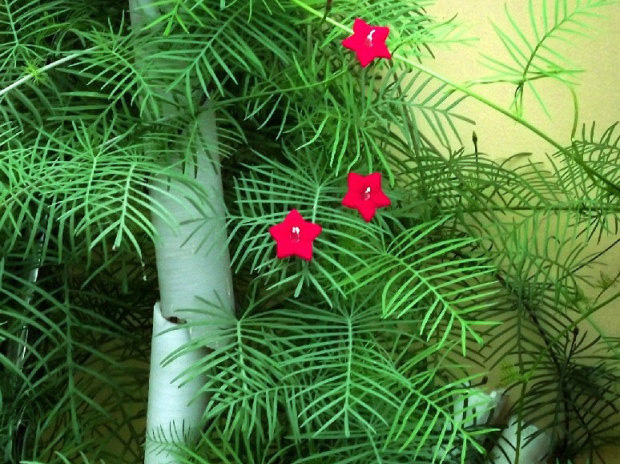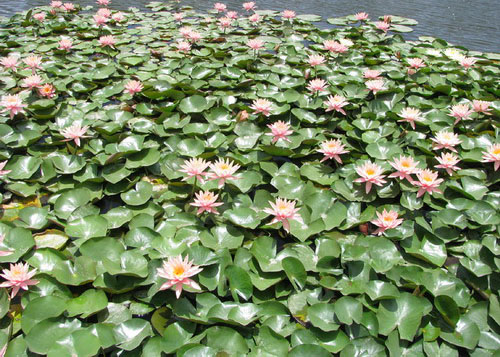Matters needing attention in culturing long tube flowers (sleeve)
Long tube flower (achimenes), also known as sleeve flower and magic grass, is deeply loved by European and American people like her close relatives, big rock tree and African oyster, and is often regarded as the protagonist of summer ground cover plant or hanging basin plant. Her popularity can be confirmed by her numerous English common names. The long-tube flower is native to Central and South America and belongs to the perennial herb of Gesneriaceae. The plant height is about 10-50 cm, the plant type is erect and vine, the leaf color is light green to dark green, long oval, the edge is serrated. Flower axil, Corolla tube, flower diameter of about 3-8 cm, flowers are white, purple, crimson, pink, blue, orange, yellow and other colors, long tube flowers for long-day flowering plants, flowering from late spring to autumn. The underground part has bulbs, and the aboveground parts will wither when dormant in winter, overwintering with bulbs, and new buds will sprout again when the weather turns warm in spring.

Generally planted with bulbs, the weather can turn warm from April to May. After the bulbs begin to sprout, the bulbs will be planted upright or parallel to the soil surface, covering soil about 1.5 cm high. The cultivation medium needs good drainage and can be used after the cultivation soil is mixed with perlite and vermiculite. The cultivation place should have bright scattered light, and the adult plant can accept direct light, as long as it can avoid strong sunlight. If you want the plant to grow thicker (especially the hanging basin variety), you can pick the heart when the new buds pop out of the soil and grow the second or third pair of leaves to promote more new buds to grow. The suitable temperature for childbearing is about 15-21 ℃ degrees at night and higher than 21 ℃ degrees per day. Culture methods and matters needing attention of long tube flower
Don't call it safflower bogey chicory moss
Binomial Achimeneshybrida
The plant kingdom.
Gesneriaceae
Distribution area Guatemala, Mexico
The long tube flower, also known as safflower bogey chicory moss, is native to Guatemala and Mexico. Like warm, humid and sunny environment, not cold-resistant, afraid of frost, not resistant to direct light, loose, fertile and well-drained sandy loam. Achimenes, like her close relative, big rock tree, is deeply loved by people in Europe and America.
1. Long tube flower
Brief introduction, propagation and cultivation of Flos Lonicerae
2. Introduction
Long tube flowers 10-20 cm tall, leaves long, elliptic, serrate. Flower axil out, Corolla long tube-shaped, flowering from spring to summer. The flowers and colors are purple, scarlet, peach or white, which are in full bloom and are suitable for potted plants.
The method of sowing or cutting tubers can be used for propagation. Spring is the suitable time, and the optimum temperature for seed germination is 18-20 ℃.
Cultivation points humus soil or serpent sawdust is the best, sunshine is about 60% to 70%, avoid direct light. Topdressing with nitrogen, phosphorus and potassium fertilizer once a month. Winter dormancy should be warm and sheltered from the wind. The sex likes to be warm, and the suitable temperature for fertility is 15-28 ℃.
Culture methods and matters needing attention of Lycoris radiata
Chinese scientific name: Lycoris longissima
Latin name: Lycoris longitubaY. Xu & G. J. Fan
Lycoris radiata, a famous writer in Chinese literature
Latin name Lycoris longitubaY. Xu & G. J. Fan
The plant kingdom.
Phylum angiosperm
Monocotyledon class
Liliformes
Amaryllidaceae
Genus Lycoris
Grow long tube Lycoris radiata
Celebrity and age Y. Xu & G. J. Fan,1974
Long tube Lycoris radiata (scientific name: Lycoris longituba Y. Xu & G. J. Fan) herbs, terrestrial. Bulb ovoid; leaves lanceolate; umbels, with 5-7 flowers, white; perianth lobes slightly reddish striped ventral, long elliptic; stamens slightly shorter than perianth; style protruding from perianth. Distributed in Jiangsu Province, China and other places, much longer than the shady slopes.
1. Morphological characteristics.
Lycoris radiata is a perennial plant. Bulb ovoid, ca. 4 cm in diam. Leaves in early spring, leaves lanceolate, about 38 cm long, generally 1.5 cm wide, the widest part is 2.5 cm, the tip is attenuated, round head, green, the middle light belt is obvious. Flower stem 60-80 cm high; involucral bracts 2, lanceolate, ca. 5 cm long, apex attenuate, base widest to 1.5 cm; umbels with 5-7 flowers; flowers white, about 5 cm in diameter; perianth lobes ventral slightly reddish striped, long oval, 6-8 cm long, 1.5 cm wide, tip slightly revolute, margin not wrinkled, perianth tube 4-6 cm long; stamens slightly shorter than perianth. Style protruding from perianth. The florescence is from July to August. There are capsules and few seeds.
2. Habitat of origin
It is distributed in Jiangsu Province and other places in China, and mostly grows on slopes. The type specimens were collected from Nanjing, Jiangsu Province.
3. Growth habits
Garlic likes to grow in sunny and humid environments, such as shady hillsides, rocks and stone cliffs, but it can also withstand semi-shady and dry environments, slightly cold-resistant, strong vitality, and has no strict requirements for the soil. If the soil is fertile and well drained, the flowers will flourish.
4. Mode of reproduction
In the natural state, Lycoris radiata has few seeds, and the germination rate is very low, so asexual propagation is generally used.
Split-plant method
The easiest way is to take the ramet, dig up the plant during the dormant period or after flowering, remove the epiphytic bulb near the mother ball and plant it, and it will blossom after about one or two years.
Scale induction and plant regeneration
Peel off the brown scale and dry scale outside the bulb of Lycoris radiata, remove the bulb neck and root system, rinse with running water and disinfect with ethanol and mercuric chloride solution. The bulb was divided into six equal parts, each containing 2-8 scales respectively, which was inoculated on the medium for inducing axillary buds, or the bulbs were divided into two, four and eight equal parts and placed directly on the medium for axillary bud induction; after axillary buds or adventitious buds were produced, the bulbs were transferred to the medium for inducing bulbs, and the leafy bulbs were placed on the rooting medium to induce rooting. The regenerated plants were transplanted into the commercial culture soil.
5. Cultivation techniques.
time
Never transplant in winter or early spring after growing leaves. Garlic likes warm climate, the highest temperature is no more than 30 ℃, and the ten-day average temperature is 24 ℃, which is suitable for growth. In winter, the daily average temperature is more than 8 ℃, and the minimum temperature is 1 ℃, which does not affect the growth.
Environment
- Prev

Culture and cultivation methods of feather-leaf pineapple
The slender and tender trailing long stem of the pineapple is about 3m tall and is covered with slender pinnately linear lobed leaves. One to several flowers gather on the main stem, drawn from the axils and raised above the leaves. The magenta high-footed dish-shaped flowers are like red tassels on a green tapestry.
- Next

Excellent aquatic flowers-Colorado water lilies
Water lilies should be said to be a world-class flower, which belongs to the genus Nymphaeaceae. The Latin name is nymphaea, which comes from the Greek nymph, meaning the quiet, pure and beautiful mountain goddess; in Egypt, water lilies are sometimes known as the bride of the Nile god
Related
- Fuxing push coffee new agricultural production and marketing class: lack of small-scale processing plants
- Jujube rice field leisure farm deep ploughing Yilan for five years to create a space for organic food and play
- Nongyu Farm-A trial of organic papaya for brave women with advanced technology
- Four points for attention in the prevention and control of diseases and insect pests of edible fungi
- How to add nutrient solution to Edible Fungi
- Is there any good way to control edible fungus mites?
- Open Inoculation Technology of Edible Fungi
- Is there any clever way to use fertilizer for edible fungus in winter?
- What agents are used to kill the pathogens of edible fungi in the mushroom shed?
- Rapid drying of Edible Fungi

